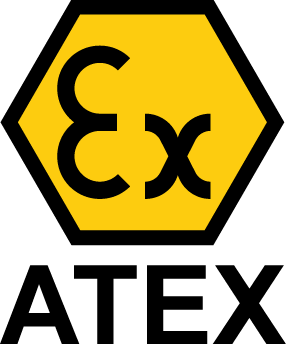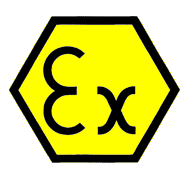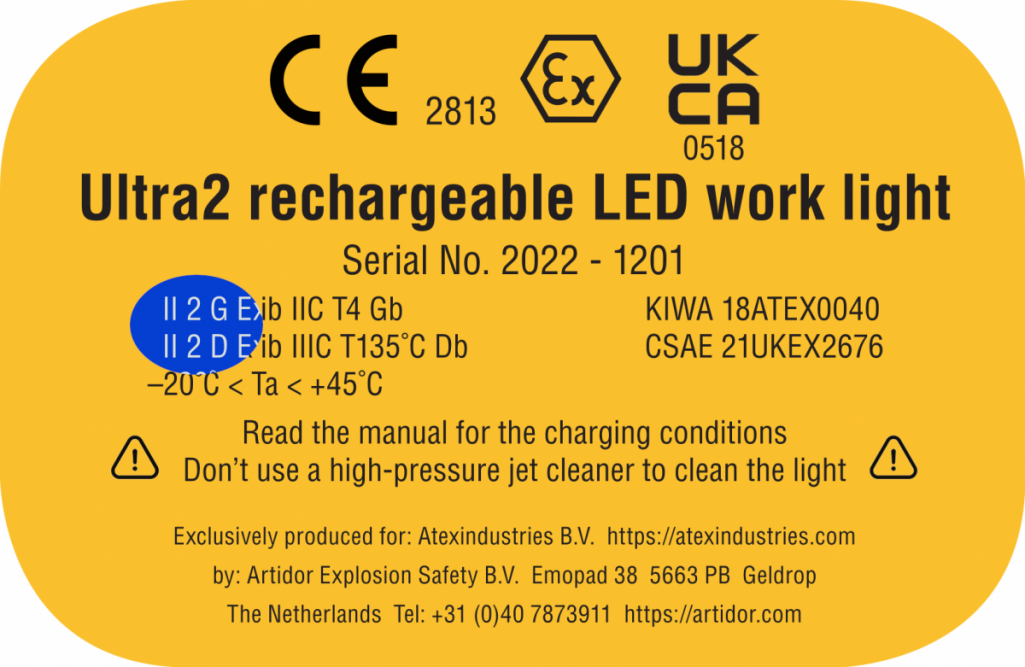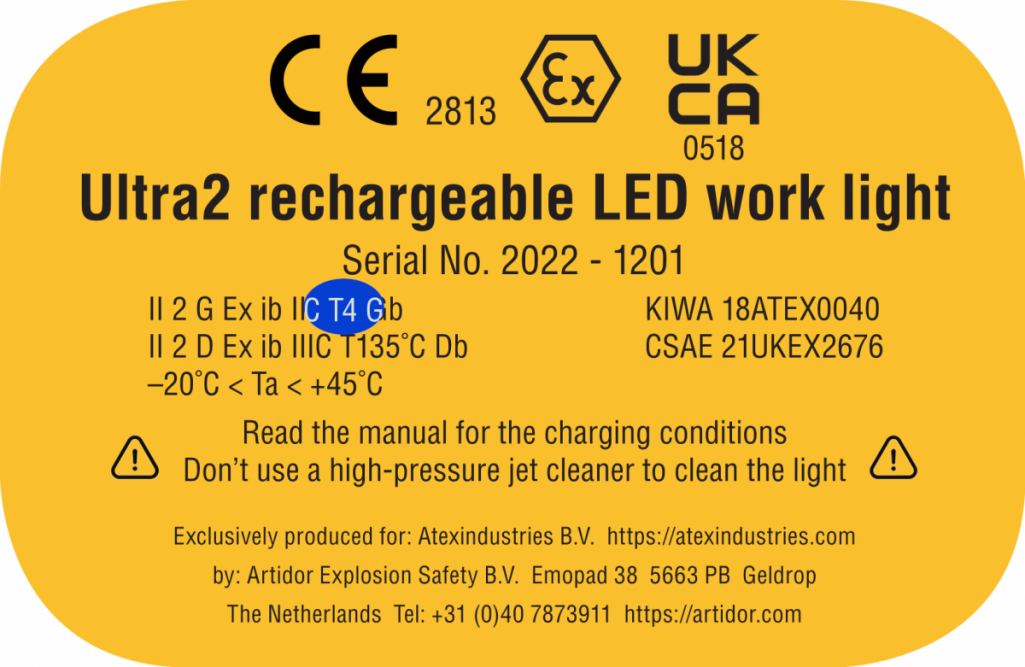What is ATEX?

What is ATEX?
ATEX is the name of two EU directives describing the minimum safety measures to be taken for workplaces and equipment used in explosive atmospheres.
Explosive atmospheres can be flammable gases, mists, vapours, dust or powder clouds mixed with the oxygen in the air. Energy added, like an ignition can cause an explosion. In order to prevent such an event, the European Union has laid out a set of directives to enhance safety working condition in such hazardous areas.
ATEX stands for..
The word ATEX itself is derived from an older European directive, the French title of the 94/9/EC directive: Appareils destinés à être utilisés en ATmosphères EXplosibles (material suited for usage in explosion hazardous areas).
The ATEX directives
ATEX is currently used as a synonym for two directives who describe which equipment is allowed in an hazardous environment and how to classify those hazardous areas with an explosive atmosphere. You can download the complete directives for detailed information:

The difference between bonding and earthing.
Bonding:
Potential differences can occur between different metal parts, but also between different parts of the earth, making sparks likely, a dangerous possibility in an Atex environment. Bonding prevents these potential differences
Earthing:
Earthing is connecting a non-voltage carrier to the earth.
The difference:
Bonding connects electrical parts to a ground, earthing connects a non-voltage carrier to the earth.
Bonding in hazardeous zones prevents sparking of different metal parts and earthing protects human life from the risk of electric shock.
Note: even with low voltages (ELV, <50VAC or 120VDC) the use of two core cables to connect electrical components made from metal is not possible as a third core is needed for bonding. The Ultra3 is made of antistatic components and can be powered by two core cables.
What do we at Atexindustries mean by ATEX?
We see many ways to express a similar solution to work safely in a hazardous area. Atexproof or -protected, explosion protected or -proof, ATEX certified, intrinsically or enhanced safety, in French sécurité augmentée, Ex rated. Many different words, also depending in which country you are. What we at Atexindustries mean is equipment that has been designed to work safely in an area which can be dangerous because of the occurrence of dust, gases, fluids that can cause explosions.
Being quite wide as a definition, we narrow done to:
1. Equipment that has been certified by a third party, a so called Notified Body, to be safe under defined circumstances, all according to the ATEX directive 2014/34/EU
Symbol for ATEX equipment
2. An area that has a defined danger according to the ATEX directive 1999/92/EG
The warning symbol for a ATEX area.
Note:
When operating in an hazardous environment, within an explosive atmosphere it is important that the right equipment is being used. All our products are fully certified with regard to the European Atex guidelines and directives. We provide all certified products with a certificate.
ATEX guidelines explained
Atex 137
The guideline 1999/92/EG or ATEX137, applies to workplaces in potentially explosive environments. Therefore, an employer must take certain measures in order to adapt to the atex directives.
For example, taking zoning into account. Zoning is the classification of a potentially explosive environment in danger gradations: the ATEX zones. In the Netherlands, home of Atexindustries headquarters, this guideline is incorporated into the Working Conditions legislation.
ATEX 95 & ATEX 114 (2014/34/EU)
The 94/9 / EG directive, also referred to as ATEX95 guideline, contains regulations for devices in potentially explosive atmospheres and is subject to CE legislation. In the Netherlands, the directive is included in the Explosion Proof Material Decree, the (technical) requirements are laid down in standards, such as EN-IEC60079-0. A list of standards that may apply to our products can be found below. The directive was replaced on April 20, 2016 by Directive 2014/34 / EU (ATEX 114).
Some theory first
1. Zones
It is important to know how dangerous the environment is where one will work. An ATEX consultant can establish the zones on behalf of the employer. We distinguish the following six zones:
Gas zones: 0, 1, 2
Dust areas: 20, 21, 22
Permanent risk (Zone 0/Zone 20) in which an atmosphere containing hazardous gas, vapor or mist or a cloud of combustible dust is present permanently, or for long periods or even frequently.
Frequent risk (Zone 1/Zone 21) in which it is probable that an atmosphere containing hazardous gas, vapor or mist or a cloud of combustible dust will appear occasionally during normal operation.
Rare risk (Zone 2/Zone 22): in which an atmosphere containing hazardous gas, vapor or mist or a cloud of combustible dust is not likely to occur during normal operation but which, if it does, may persist only for a short time.
Let’s get practical
1. Zones
The Ultra floodlights, Ultra1, Ultra2 and Ultra3 are all certified for use in zone 1 and zone 21.
By principle they can also be used in a downwards classified zone: The Ultra family can therefore also be used in zone 2 and zone 22 or of course also in a not ATEX, a safe, zone.
We write: the Ultra’s are suitable for use in zone 1,2, 21 and 22.
How do we know and how can you know? *)
Meaning of the marking II 2G and II 2D:
II: we have two categories, I for equipment meant for mining and II for Atex zones.
2G is an indication for equipment suitable for zone 1 and zone 2
2D is an indication for equipment suitable for zone 21 and zone 22
Also the marking Gb and Db indicates the suitability for zones 1, 2, 21 and 22.
2. Gasgroups
Different gasses have different characteristics and can be much more dangerous than other in identical circumstances. To make this complex chemical reasoning more clear and structured, the gasses have been classified in different groups:
IIA, IIB, IIC whereas IIC is considered more critical, dangerous under similar conditions, than IIB and IIB more than IIA.
2. Gasgroups
The Ultras have been certified for gasgroup IIC.
Downwards, they can indeed be used where gasgroups IIA, IIB occur.
Of course assuming similar conditions.
3. Temperature
Common sense tells us, that a higher temperature leads to more danger. An important characteristic is the flashpoint of a liquid. As defined in EN 60079-10-1 flashpoint means the lowest liquid temperature at which a liquid gives off enough vapours to be capable of forming an ignitable air mixture”. Obviously it is important to keep the temperature of the used equipment, the lamp below the flashpoint of the present liquid. Also the autoignition temperature a.o. for the present fluids must be observed. Again to structure these properties, ATEX equipment is classified in a Temperature Class, from cold to hot: T6 to T1:
T6 max temperature is 85°C
T5 max temperature is 100°C
T4 max temperature is 135°C
T3 max temperature is 200°C
T2 max temperature is 300°C
T1 max temperature is 450°C
Some examples: a high powered sodium floodlight is often certified with a temperatureclass T2, plugs and socket who has no energy conversation are often T6.
3. Temperature
The Ultra family is certified with a temperatureclass of T4 meeting most requirements fom oil and gas industries.
4. Serial number
Not very special indeed, more items in our life have serial numbers. But for ATEX certified equipment they are crucial for traceability purposes. Make sure to note the numbers and to keep track of them.
5. Nobo
We are proud to make safe equipment. But that is not good enough. Atex equipment must be tested and certified by independent Bodies, the so called Notified Bodies (“Nobo”). Which one? In our case the Nobo with number 2813 tested the Ultra2 and gave it the ATEX certificate number 18ATEX0040.
| IP | Protection against solid objects | Protection against liquids |
|---|---|---|
| 0 | No protection | No protection |
| 1 | Protected against objects greater than 50mm | Protected against dripping of water |
| 2 | Protected against objects greater than 12.5mm | Protected against dripping of water falling at 15° |
| 3 | Protected against objects greater than 2.5mm | Protected against spraying water |
| 4 | Protected against objects greater than 1mm | Protected against splashing water |
| 5 | Dust protected | Protected against jets of water |
| 6 | No ingress | Protected against powerful jets |
| 7 | - | Protected against certain immersion |

Did we forget something?
What is the meaning of the letters ib, in “II 2 G Ex eb ib IIC T4 Gb” or de in de code of our transformer “Ex de IIC T4 Gb” or db eb in the code of the power reel, or em etc?
To make something safe and atexproof more than ten different construction methods have been devised and accepted. These construction methods are accurately described in the standards (EN-60079-..). These construction methods, called “type of protection” are chosen by the manufacturer of his equipment. We chose “ib” (intrinsic safety for zone 1 or 21) for our lamps which is a lightweight protection type and therefore very suitable for portable equipment. Other manufacturer can choose another protection type for their products.
*): Now you know too!
DISCLAIMER
The information stated above is just general information. Furthermore, there is specific information on your industry and application needed in order to make the right choices for security reasons. We are not responsible for actions made based on the content of this website. Curious about more detailed and up to date information for your industry specific needs? Feel free to contact us or other authorities on this matter.







